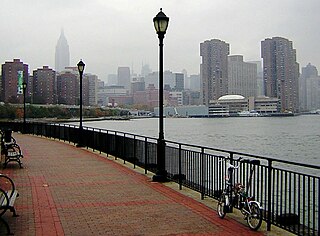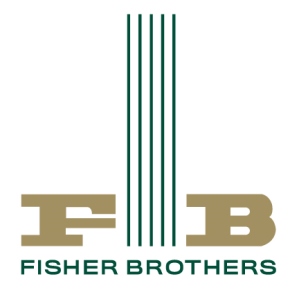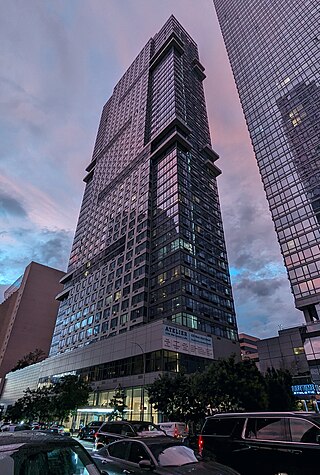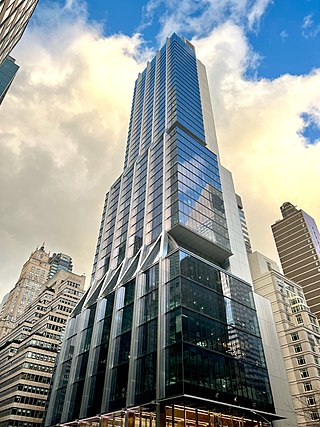
"The Big Apple" is a nickname for New York City. It was first popularized in the 1920s by John J. Fitz Gerald, a sportswriter for the New York Morning Telegraph. Its popularity since the 1970s is due in part to a promotional campaign by the New York tourist authorities.

Midtown Manhattan is the central portion of the New York City borough of Manhattan and serves as the city's primary central business district. Midtown is home to some of the city's most prominent buildings, including the Empire State Building, the Chrysler Building, the Hudson Yards Redevelopment Project, the headquarters of the United Nations, Grand Central Terminal, and Rockefeller Center, as well as several prominent tourist destinations including Broadway, Times Square, and Koreatown. Penn Station in Midtown Manhattan is the busiest transportation hub in the Western Hemisphere.

Kips Bay, or Kip's Bay, is a neighborhood on the east side of the New York City borough of Manhattan. It is roughly bounded by 34th Street to the north, the East River to the east, 23rd Street to the south, and Third Avenue to the west.

Stuyvesant Town–Peter Cooper Village, colloquially known as StuyTown, is a large post–World War II private residential development on the east side of the New York City borough of Manhattan. The complex consists of 110 red brick apartment buildings on an 80-acre (32 ha) tract stretching from First Avenue to Avenue C, between 14th and 23rd Streets. Stuyvesant Town–Peter Cooper Village is split up into two parts: Stuyvesant Town, south of 20th Street, and Peter Cooper Village, north of 20th Street. Together, the two developments contain 11,250 apartments.

Giuliani Partners LLC is a management consulting and security consulting business founded by former New York City Mayor Rudy Giuliani in January 2002. As of 2020, Dun & Bradstreet estimated that the business had 20 employees and revenues of $6.34 million.

The Lower Manhattan Security Initiative (LMSI) is a New York City Police Department initiative overseen by the Counterterrorism Bureau to increase surveillance efforts in Lower Manhattan, New York City, New York, United States. It is housed in the Lower Manhattan Security Coordination Center (LMSCC) located at 55 Broadway. The LMSI covers a 1.7-mile area from Canal Street to Battery Park, including the New York Stock Exchange, World Financial Center, former World Trade Center site, and numerous financial institutions.

Related Companies, L.P. is an American real estate firm with headquarters in New York City, and with offices around the country including in West Palm Beach, Chicago, Boston, Los Angeles, San Francisco, as well as in London. Related developed the Hudson Yards Redevelopment Project, which comprises 28 acres (0.11 km2) in Manhattan's Chelsea and Hell's Kitchen neighborhoods. Related is also the largest private owner of affordable housing in the United States.

Pace University is a private university with three campuses in New York: Pace University in New York City, Pace University in Pleasantville, and Pace Law in White Plains. It was established in 1906 as a business school by the brothers Homer St. Clair Pace and Charles A. Pace. Pace enrolls about 13,000 students as of fall 2021 in bachelor's, master's and doctoral programs.
The New York City Police Foundation (NYCPF) is a non-profit established in 1971 by the Association for a Better New York to privately fund New York City Police Department initiatives. The organization has been criticized for lacking transparency in its fundraising and donations. It is regarded as the first major police foundation in the United States.

R/GA is an innovation consultancy, and digital design and advertising agency, headquartered in New York City, with global offices in Austin, Los Angeles, San Francisco, Portland, London, Berlin, São Paulo, Buenos Aires, Singapore, Shanghai, Sydney and Tokyo. The company has received a number of industry honors for its creative and media work, including Adweek's Digital Agency of the Decade in 2009 and Campaign Magazine's Digital Innovation Agency of the Decade in 2019. R/GA is a subsidiary of Interpublic Group of Companies.

Barry Stuart Sternlicht is an American billionaire and the co-founder, chairman, and CEO of Starwood Capital Group, an investment fund with over $100 billion in assets under management. He is also chairman of Starwood Property Trust. He is the founder of Starwood Hotels and Resorts Worldwide and served as its Chairman and CEO from 1995 to 2005. As of May 2023, his net worth was estimated at $4.6 billion.

Fisher Brothers is a real estate firm in New York City. It was formed by Martin Fisher in 1915, and later joined by his brothers Larry and Zachary. The Fisher family has substantial real estate holdings in New York City and elsewhere and are considered one of the "royal families" of New York real estate, alongside the Dursts, Roses, Rudins, and Tishmans.
Lewis Rudin was an American real estate investor and developer. Along with his older brother Jack Rudin, he presided over a family empire of 40 buildings valued at $2bn including more than 3,500 apartments in 22 buildings in New York City. Rudin was a founder of NADAP, a private nonprofit social services organization that serves residents in need of the New York City metropolitan area. Rudin also contributed to efforts to rescue New York City from imminent bankruptcy during the 1975 New York City fiscal crisis.
Samuel Rudin (1896–1975) was a New York real estate developer and founder of the Rudin Management Company and patriarch of the Rudin family.
Jack Rudin was a New York City real estate developer and a son of real estate developer Samuel Rudin.

One Vanderbilt is a 73-story supertall skyscraper at the corner of 42nd Street and Vanderbilt Avenue in the Midtown Manhattan neighborhood of New York City. Designed by Kohn Pedersen Fox for developer SL Green Realty, the skyscraper opened in 2020. Its roof is 1,301 feet (397 m) high and its spire is 1,401 feet (427 m) above ground, making it the city's fourth-tallest building after One World Trade Center, Central Park Tower, and 111 West 57th Street.

Midtown South is a macro-neighborhood of the borough of Manhattan in New York City, generally characterized as constituting the southern portion of Midtown Manhattan. Midtown Manhattan hosts over 700,000 daily employees as a busy hub for workers, residents, and tourists. The Empire State Building, the Flatiron Building, Pennsylvania Station, Madison Square Garden, the Macy's Herald Square flagship store, Koreatown, and NYU Langone Medical Center are all located in Midtown South.

Atelier Condo is a residential condominium skyscraper located in the Hudson Yards, Manhattan, New York. The skyscraper stands at 521 ft and includes 478 individual units spanning 46 floors.

425 Park Avenue is an office building in New York City redeveloped by L&L Holding and GreenOak Real Estate, with a design by architectural firm Foster + Partners. Work on the new structure began in 2016, and the building was completed in October 2022.















